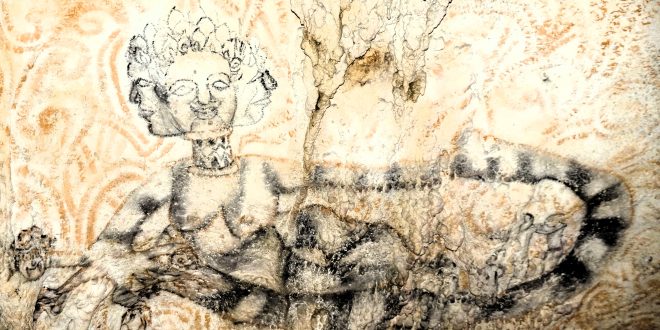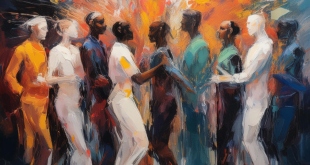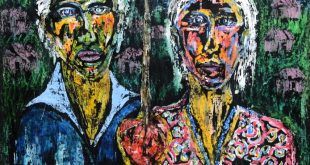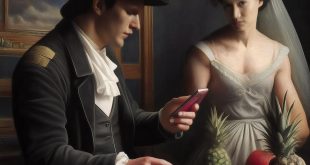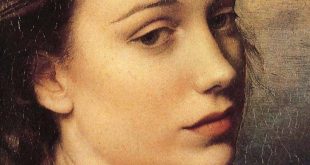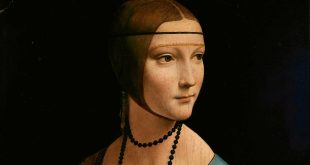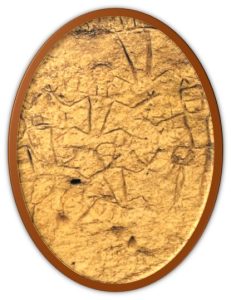
The fusion of tradition and innovation that makes Philippine art unique and dynamic
Meeting Benches, a website created by artist Dastilige Nevante, serves as a virtual meeting place and source of inspiration for travelers, artists, thinkers, and dreamers from around the world. The site celebrates the importance of benches as meeting spaces where stories and thoughts can be shared. The virtual benches of Meeting Benches become silent witnesses to chance encounters, deep conversations, love stories, and moments of reflection. The site hosts content ranging from art to poetry, from music to travel stories, offering a creative collage of words, images, and sounds. Whether you are an art lover or simply curious to explore a world of inspiration and beauty, Meeting Benches is a must-visit digital destination, also a true dive into Philippines shades of creativity.
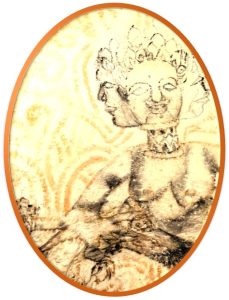
Cave paintings are a fascinating testimony to the ancient cultures of the Philippines. Four sites in particular offer a truly fascinating glimpse into the ancient cultures that inhabited the archipelago. One of the most well-known sites is the Angono Caves, located in Rizal, which contain rock carvings that date back approximately 3,000 years. These carvings show stylized human figures, frogs, and lizards, along with other drawings that may have represented other interesting figures, although erosion may have made them indistinguishable. In addition to the Angono Caves, there are several other cave painting sites in the Philippines that deserve attention. In the province of Cagayan, the Peñablanca Caves contain charcoal drawings on the walls that represent human and animal figures. The Singnapan Caves, located in southern Palawan, also feature cave paintings with charcoal drawings. In the Anda Peninsula, however, there are cave paintings representing stylized figures of people and animals made with red hematite.
TO THE PHILIPPINE YOUTH – Poem by Jose Rizal: “Hold high the brow serene, o youth, where now you stand; let the bright sheen of your grace be seen, fair hope of my fatherland! Come now, thou genius grand, and bring down inspiration; with thy mighty hand, swifter than the wind’s violation, raise the eager mind to higher station……”
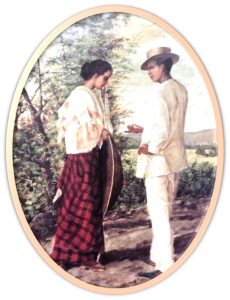
As in many other ancient cultures, cave paintings in the Philippines are rich in symbolic meaning. They reflect the beliefs, practices, and daily lives of the people who created them. Many cave paintings depict hunting scenes, ritual dances, and religious ceremonies, suggesting that these drawings played an important role in community rituals and spiritual practices. Representations of animals, such as deer, birds, and fish, often symbolize the ancient people’s connection and dependence on nature and local wildlife for survival. Stylized human figures may represent ancestors, deities, or community members, and are often depicted in poses that indicate daily or ritual activities. Some drawings, such as depictions of constellations or celestial events, may have astronomical meanings that were important for navigation and agricultural planning. Cave paintings can also be seen as a form of visual communication, used to tell stories, pass on knowledge, and teach younger members of the community. Taken together, all of these symbolic meanings provide valuable insight into the lives and beliefs of ancient people in the Philippines.
TO CELIA – Poem by Francisco Balagtas: “If I recall and read again those days in love’s long-faded script, would there be not a mark or trace but Celia’s, imprinted on my breast? The Celia whom I’ve always feared might forget our love, who took me down these hapless depths, the only reason for this turn of fate. Again, would I neglect to read the pages of our tenderness, or call to mind the love she poured, the bitter struggle I gave for it…?
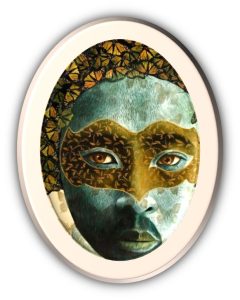
Cave paintings in the Philippines were created using a variety of artistic techniques, adapted to the resources and tools available at the time. Many were made by carving directly into the surface of the rock with sharp tools such as stones or bones, a technique that allowed for precise contours and details. Some drawings were made using charcoal, obtained by burning wood or other organic substances. This material was then applied to the walls of the caves to create images of human and animal figures. In some regions, such as the Anda Peninsula, red hematite, a ferrous mineral, was used to create deep red paintings. This pigment was ground and mixed with water or animal fat to obtain a paint that could be applied with the fingers or rudimentary brushes. In addition to paintings, many caves feature graffiti, which are superficial carvings made with sharp tools; they often accompany the paintings and add additional details or symbols. These techniques demonstrate the ingenuity and creativity of the ancient people of the Philippines.
A TREE – Poem by José Corazón de Jesús: “Viewed from a distant vantage, I appear as a cross with arms outstretched; as I stayed on my knees long enduring, it seems that I am kissing God’s feet. Like an organ in a church, praying amid extreme sorrows, is the candle flame of my life keeping vigil upon my tomb. At my feet is a spring that sobs all day and all night; upon my branches lie the nests of love-birds….”

The creative continuity in Philippine painting is a fascinating journey from ancient cave paintings to contemporary artistic expressions. During the Spanish colonial period, Philippine art underwent European influences that led to the birth of a unique style. Creating art that combined Western elements with traditional motifs and techniques, local artisans reinterpreted the European baroque. In the 20th century, Philippine art continued to evolve, with artists such as Fernando Amorsolo, known for his luminous landscapes and portraits of rural life. The creative continuity in Philippine painting is evident in the ability of artists to draw on their cultural roots while exploring new forms of expression. This fusion of tradition and innovation makes Philippine art unique and dynamic, reflecting the country’s rich history and cultural diversity.
FLORANTE AT LAURA – Poem selection by Florante de Lima: “Yet if her ‘yes’ was left unspoken, a gleam still lit my love dark-cloaked; and when my hour of leaving broke in, shy tears she shed, a pearly token, or this (a stanza from Florante’s dad’s ode to tough love, now apparently oft-repeated as sound advice on child-rearing). One who is used to pleasure’s fill is weak of heart, is prone to ill; his trials though imagined still reduce his fortitude to nil…”
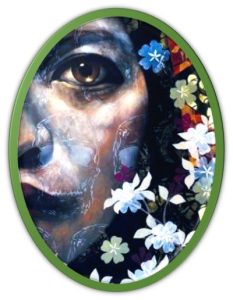
There are many contemporary painters in the Philippines who draw inspiration from the country’s rich tradition of painting. Four artists, keeping traditions alive while exploring new forms of expression, continue to shape and redefine the Philippine art scene. Ronald Ventura, known for his style that blends realism and fantasy, is one of the Philippines’ most acclaimed artists; his works often explore cultural and historical themes, reinterpreting them in a modern way. Nona Garcia, on the other hand, uses realism to explore themes of representation and cultural meaning; her works often include everyday objects and cultural artifacts, inviting viewers to reflect on personal and collective histories. Juanito Maiquez, known for his style that combines Japanese robot culture, hip-hop, and graffiti, demonstrates how contemporary art can reinterpret and modernize cultural traditions. Andres Barrioquinto, known for his use of the macabre and surreal, often inspired by Philippine history and culture, has captured the attention of the public with vibrant colors and attention-grabbing images.
BONSAI – Poem by Edith Tiempo: All that I love I fold over once and once again and keep in a box, or a slit in a hollow post, or in my shoe. All that I love? Why, yes, but for the moment, and for all time, both. Something that folds and keeps easy, son’s note or Dad’s one gaudy tie, a roto picture of a queen, a blue Indian shawl, even a money bill. It’s utter sublimation, a feat, this heart’s control moment to moment, to scale all love down, to a cupped hand’s size till seashells are broken pieces from God’s own bright teeth, and life and love are real things you can run and breathless hand over to the merest child.”
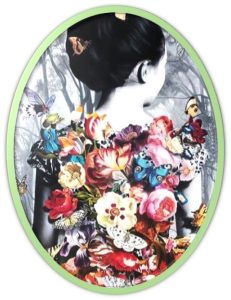
His works explore dark and complex themes, such as the beauty and ugliness of life, midlife struggles, and frustrations, using an expressive and surreal style. Andres Barrioquinto, born on April 6, 1975 in Manila, is known for surreal portraits that combine elements of baroque iconography and Japanese prints reinterpreted in a pop style. His works often depict men, women, and anthropomorphic animals in forests filled with butterflies and birds, introducing the theme of vanitas with a strong visual impact. Barrioquinto spent part of his youth in Hong Kong, where he studied at the Royden House School. He later attended the University of Santo Tomas in Manila, graduating with a degree in Fine Arts with a specialization in painting. His works have been exhibited in exhibitions both in the Philippines and abroad, including Singapore and the United States.
IF YOU ARE CRYING, MY PEOPLE – Selection from a poem by Amado V. Hernandez: “Tear, my people; the miserable fate of your land, the flag of your country, is covered by a foreign flag, and the language you inherited is covered by another language, the same day you were robbed of freedom, August 13, when Manila was taken. Weep, while they celebrated beyond measure, in the tomb of the little ones, the great ones were having fun; like you is the Last, a slave to debt, like you is Sisa, displaced by poverty; there is no strength to defend oneself, there is no courage to fight, I lament, if one prays; crying, if one is plundered…!
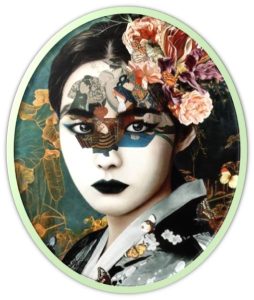
Andres Barrioquinto draws inspiration from a variety of cultural influences that are reflected in his unique and surreal works. With a style that manifests itself in complex compositions and elaborate portraits, he skillfully incorporates elements of Baroque art, visual drama and rich color. Japanese prints, known for their clean lines and vibrant colors, have a significant influence on his work. He reinterprets these elements in a modern way, creating a fascinating mix of the traditional and the contemporary. Combining different styles and themes to create works that are simultaneously familiar and innovative, Barrioquinto also integrates elements of pop culture. Vanitas themes, often represented through symbols such as skulls, butterflies and flowers, add depth and meaning to his compositions.
THE PEARL OF THE ORIENT – Poem about Filipino Culture: “Emerald hills, sun-kissed shores, beneath azure skies, folklore soars. Rice terraces climb, reaching the clouds, in the Pearl’s embrace, nature is unbound. Valiant warriors, history’s song, where tales of bravery and love belong. In every dance, in every tune, echoes the heart, the soul’s monsoon. Islands many, yet one nation strong, harmony and unity, where all belong. Glistening pearl amidst the vast blue, oh Philippines, to thee we stay true.”

Andres Barrioquinto uses a variety of artistic techniques to create his distinctive works. Barrioquinto is known for his use of oil on canvas, a traditional technique that allows him to achieve rich colors and intricate details; this technique is ideal for his complex portraits and elaborate compositions. One of the defining characteristics of his work is the layering of images and symbols; he uses multiple layers of paint to create depth and complexity, often overlaying human figures with natural and symbolic elements. This artist pays great attention to detail, using fine brushes to add minute and precise elements to his works. To explore themes of mortality, beauty and decay, he creates works rich in symbolism, which is well integrated into his compositions. In addition to oil on canvas, to achieve different effects and further enrich his works, Barrioquinto experiments with charcoal and acrylic. These techniques allow him to create works that are visually captivating and rich in meaning.
ISLAND LULLABY – Philippine poem serenade to the tranquil moments: “Moonlit seas, waves whisper low, Island lullaby, ebbing flow. Palm trees sway, stars overhead, nature’s cradle, where dreams are fed. Lanterns flicker, fireflies dance, night’s embrace, in a tranquil trance. Tales of old, under the canopy, island songs, a timeless spree. Calm descends, as night takes hold, mysteries of islands, in stars retold. Dreams alight, on silvered bay, island lullaby, ends the day.”
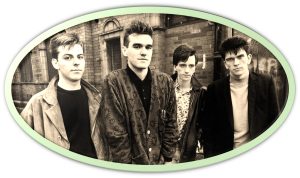
Music also plays a major role in this artist’s inspiration. Infusing his works with veins of melancholy and introspection, The Smiths, Jeff Buckley, and Soundgarden have definitely influenced his artistic approach. These cultural influences help make his works visually captivating and meaningful. His works are exhibited in several international galleries and exhibitions. Andres Barrioquinto had a solo exhibition titled “Realistic Abstraction” at the Tang Contemporary Art Gallery in Bangkok. During Artinformal, Makati 2022, the works were exhibited in group exhibitions such as “Archives II”. Another solo exhibition, titled “Falling” was held at Tang Contemporary Art Gallery in Beijing in 2021. For up-to-date information on his current and upcoming exhibitions, you can visit sites such as Artnet and MutualArt.
YELLOW MOON – Poem by Angela Manalang-Gloria: “Share on Facebook, share on Twitter, share on Tumblr, view print mode, copy embed code, add this poem to an anthology, load audio player Angela Manalang-Gloria. I stand at my window and listen; only the plaintive murmur of a swarm of cicadas. I stand on the wet grass and ponder, and turn to the east and behold you, great yellow moon. Why do you frighten me so, you captive of the coconut glade? I have seen you before, have flirted with you so many a night. When my heart, ever throbbing, never listless, had pined for the moonlight to calm it. But you were a dainty whiteness that kissed my brow then. A gentle, pale flutter that touched my aching breast. You are a lonely yellow moon now. You are ghastly, spectral tonight, alone behind your prison bars of coconut trees. That is why I do not dare take you into my hand and press you against my cheek to feel how cold you are. I am afraid of you, yellow moon.”
 Meeting Benches World art in all forms
Meeting Benches World art in all forms
